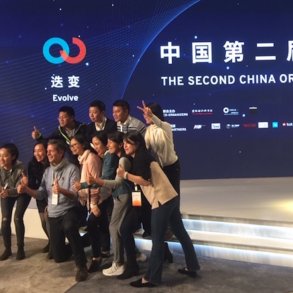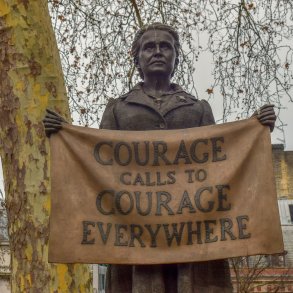Interview by Anna Betz of Ian Sherriffs, manager of the Memory Service at Camden & Foundation Trust, in United Kingdom.
This is Part 3 of 5 parts. Part 1 is here. Part 2 is here. Parts 4&5 will be published soon.
What are your key learnings as a team leader?
Not leading from the front and not having power over people but power with people. Acknowledging, when I first took over, that sometimes I felt I had to mirror individuals who came before me. Not just those immediately before me but whomever I have encountered, met with before, was managed by before, or had some role with before.
What is most important for me is that I need to be my own individual, have my own style, my own opinions and lead with those. If people want to follow me they can.
Having elements of self-awareness, having some ability to form my own leadership style that can bring in others, I utilize all the things I have learnt but also don’t just be a cogwheel of something else that has been tried before. It is worth exploring new things for myself and seeing what works and what doesn’t work, and then building on my strengths.
The courage to explore new ways including new language
It is daunting to take over a team which has been managed by a strong individual in the past and at the same time has strong individuals within it operating within a rigid hierarchical structure. In nursing the structures are not fluid. They range from band 5 to band 7. (1)
Throughout my nursing training I was told, you work X amount of time, then you will reach this position. If you want to do X amount of more time then you will reach another position.
On the one hand the rigid bandings make me feel quite restrained while on the other hand I suddenly found myself going very quickly up a ladder landing in a position where I had more perceived than real influence.
I believe we should be able to influence our organizations irrespective of our banding. I want to encourage people to feel comfortable and not be afraid to come forward with new ideas and questions.
Our perceptions of organizational norms and structures have become a subtle part of us and how we see what’s happening, what influence we can have and how we perceive and treat others. A manager in a traditional organization like the NHS is perceived as someone who has control over others.
(Interviewer’s note: Our present language also reflects a top-down hierarchical power structure. Words are powerful because they reflect our assumptions, perspectives and worldviews.
For example the term Human Resources objectifies humans. A resource is a main source or supply from which a benefit is produced and it has some utility. (2) Caseloads: Cases are like numbers without identities and a load is something that puts weight on your shoulders.)
How could we change the culture to honor human potential?
Role modeling is important to demonstrate that something is achievable and show that working in another way is possible. The Memory Service team is an example that shows that even in a small team, good practices are spreading.
Language doesn’t change from one day to the next. Inevitably we slip back into old habits and that’s ok. To take this service forward is something I would love to do. However, my aspirations are that I am not always going to be in the Memory Service.
What matters is to learn from these experiences and take that learning to a wider community.
Learning to sense when to introduce something new–which means being sensitive to the right time, the right people and the right context–is fundamentally important for any transformational process.
What are the qualities of a leader that inspire you and practices worth replicating?
What made a big difference to me was my 8-week placement in the Croydon Memory Service where I had a mentor who was socially very different from me: she was older, married, religious, very sensible, and quite straight, yet she was the biggest influence on me because she was always there for me like a sounding board and was non-judgmental.
I knew within a week of working there that I loved working with people with dementia. She immediately gave me the opportunity to have discussions with her and to float ideas with her that expanded my knowledge.
She also challenged me asking why I didn’t take an idea further and explore different areas. She signposted me in the right direction which enabled me to develop a career quite quickly.
The leadership qualities she modeled were
- good listening,
- reflective practice,
- pushing encouragingly in the right direction without wanting me to be like her.
She allowed me to take my learning as far as I wanted to take it and I happened to want to take it as far as I could. Her trusting me helped me trust myself, and it improved my confidence. I didn’t feel like a student, more like a colleague to her who could be of use and purpose in that placement. That purpose meant a lot to me. It meant I wanted to be there.
What skills does a leader need in order to create a collaborative culture and what kind of training would be useful?
Telling people/leaders/managers what they need to do and teaching them about frameworks doesn’t work. I valued opportunities where I could hear other peoples’ experiences about collaboration, what went well for them and what didn’t go so well.
Creating a collaborative culture clearly requires a lot of hard work and many examples. There are no experts in this field. We need to see examples and hear their stories which then might inspire us to try an approach.
Honest story-telling and being in a group with other people could help reflect on and develop our own skills and competencies. Most of the benefit from trainings comes from speaking to colleagues and hearing stories, not from experts, theories. or powerpoint presentations. We need practical examples and a group approach to discover what can work best in any given context.
There is only so far you can go by yourself in this kind of learning. It needs a wider scope, feedback, reflection, new impetus. There is something important in having fresh eyes and fresh conversations. It enlightens everything and broadens our perceptions.
The 2 networks in NHS England I am associated with are very formal and clinical. Conversations don’t go further than talking about staff shortages and NICE guidelines. (2) It would be a lot more interesting to talk about how to support young staff members.
(Interviewer’s note: Check out Communities of Practice as a group approach and how they work.)
What does it take to build a good team, from the organisational perspective?
We need trust in local decisions and trust in managers. At the moment we have a system in place that is complicated, cumbersome and that doesn’t reflect or serve the individual. Recruitment doesn’t reflect the individual and their creative potential. Creative people are missing out when they don’t meet the necessary score of 18/30 at the job interview. Some people with huge potential simply don’t do well in interviews.
The whole recruitment process already creates real limitations to what is possible. C & I (Camden & Islington Foundation Trust) needs to review how they can attract the best individuals.
In my view it is about saying: ‘look at what you can be and what you could become.’ Also if there isn’t a mixture of people in a team, the work tends to become more mechanistic and predictable.
The interconnection among organizations, the communities they serve, and the workforce is also non-existent. Thus everyone remains in their silos limited to their own narrow context that shapes their perceptions.
[Interviewer’s note: Torbay NHS Trust: Recruitment which includes diversity in thinking:
Regarding recruitment for the Torbay NHS Trust, Jane Pightling has led a process of bringing together senior leaders to design and deliver the recruitment of a system leadership team to take this work forward. (3) (4)
A new type of job description in the Torbay Trust talks of system leadership, coaching and compassionate leadership. Since the trust had to meet criteria set down by the NHS but also wanted to attract diversity, they included diversity of thinking in addition to the usual ones i.e diversity of ethnicity, sexuality, and culture .
The design of the role and the title of ‘system leader ‘was to reflect going beyond the boundaries of the organization, and was probably the first time it has been used in a job title role in the NHS. Their creative new approach to communicating recruitment is also shown in this video.
Torbay NHS Trust showed that even working within a hierarchical HR system with Job Descriptions and the agenda for change process, it was possible to create a process beyond competencies using a values-based recruitment approach. It included a diagnostic tool. It also included involving staff and care receivers in a meaningful way where they worked alongside candidates. Their feedback about this experience had an impact on the final outcome.
NHS Scotland has been working using values-based methods for some time and has some good guidance.)
Part 4 of this interview will be published soon.
(1) The NHS operates nine bands and job profiles are classified accordingly. For example, a catering assistant or cleaner is typically a Band 1, while an Administrative Assistant and Porter is a Band 2. Within Nursing, qualified Staff Nurses start as a Band 5 moving to Band 6 as a Junior Sister, Specialist Staff Nurse or Emergency Nurse Practitioner.
A Band 7 Nurse is a senior nursing role such as a Senior Sister, while a Band 8 (which is sub-divided into 4 bands – A, B, C and D) generally includes Assistant Directors of Nursing, Senior Nurse Manager, Matron or Divisional Nurse. At the top end of the scale are Band 9’s, who are very senior Clinicians such as Chief Nursing Officers and Executive Directors of Nursing.
When it comes to getting paid by your new employer, your salary will be determined by your Band and also where you work in the UK. The NHS is devolved in the UK, with England, Northern Ireland, Scotland and Wales each having their own publicly funded health systems and slightly different pay scales.
For full details of the pay scales for nurses working in the NHS click here.
(2) The National Institute for Health and Care Excellence (NICE) provides national guidance and advice to improve health and social care.
 Anna’s background is in Health and Social Care with training in Herbal Medicine, Socialwork, Mindfulness Practice, Transparent Communication, and Systemic Family Therapy. She practices a pro-active evolutionary approach to Health and Wellbeing and leads on projects in the UK National Health Service using Mindfulness and diet for people suffering from chronic inflammatory diseases like diabetes and dementia. She feels at home in places where individual, communal, organisational, and social evolution meet, and where people support each other in becoming whole and feel enlivened.
Anna’s background is in Health and Social Care with training in Herbal Medicine, Socialwork, Mindfulness Practice, Transparent Communication, and Systemic Family Therapy. She practices a pro-active evolutionary approach to Health and Wellbeing and leads on projects in the UK National Health Service using Mindfulness and diet for people suffering from chronic inflammatory diseases like diabetes and dementia. She feels at home in places where individual, communal, organisational, and social evolution meet, and where people support each other in becoming whole and feel enlivened. What inspires Ian Sherriffs as Team Manager is the impact that his role can have in developing the knowledge, skill set and confidence of individuals who provide support for people living with dementia and their loved ones. He sees himself as a role model of clinical elements of a job but more importantly an influence on team culture to promote independence, creativity and enjoyment in a sometimes challenging work environment.
What inspires Ian Sherriffs as Team Manager is the impact that his role can have in developing the knowledge, skill set and confidence of individuals who provide support for people living with dementia and their loved ones. He sees himself as a role model of clinical elements of a job but more importantly an influence on team culture to promote independence, creativity and enjoyment in a sometimes challenging work environment.Featured




